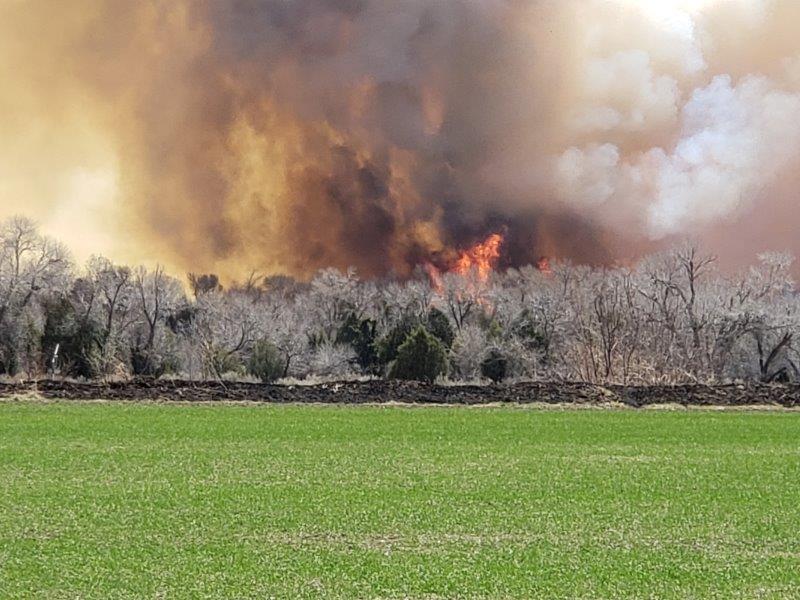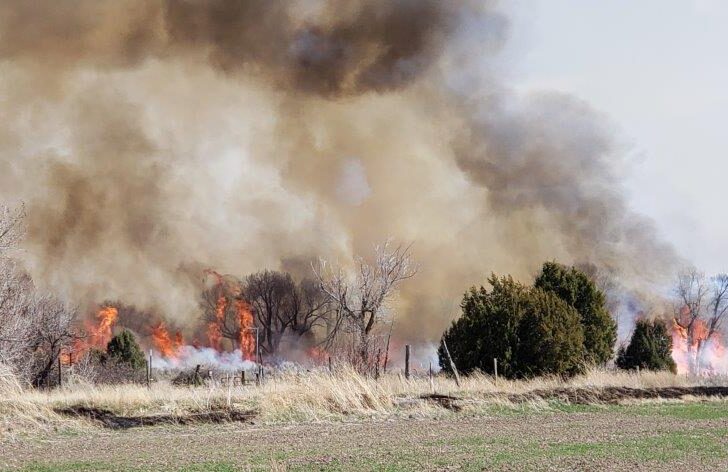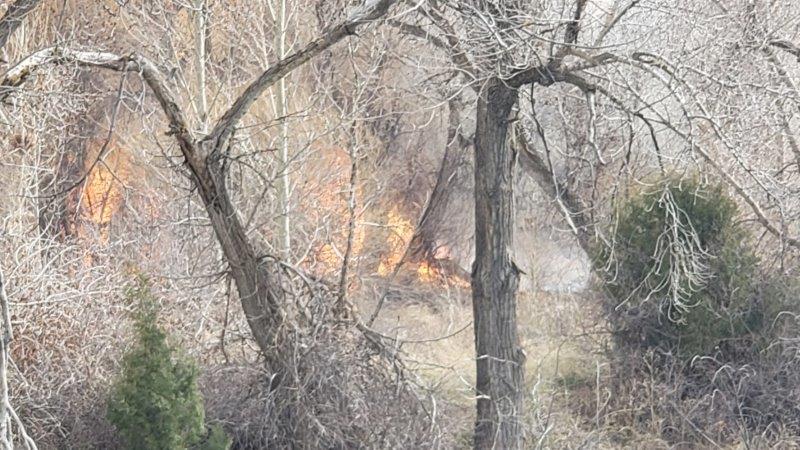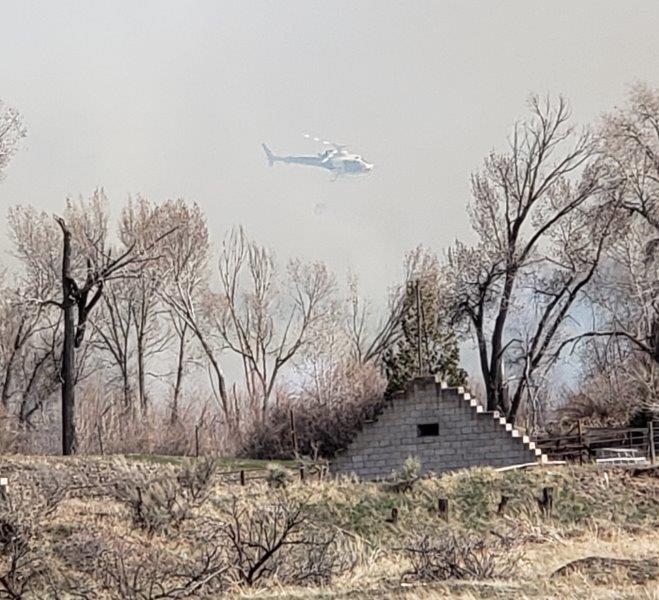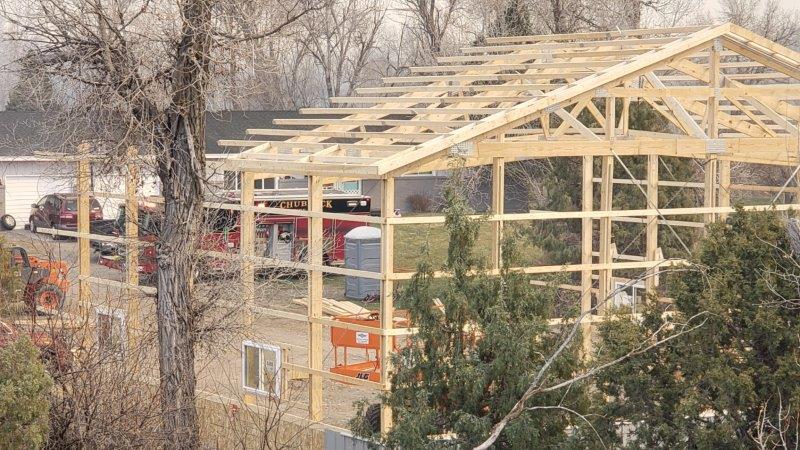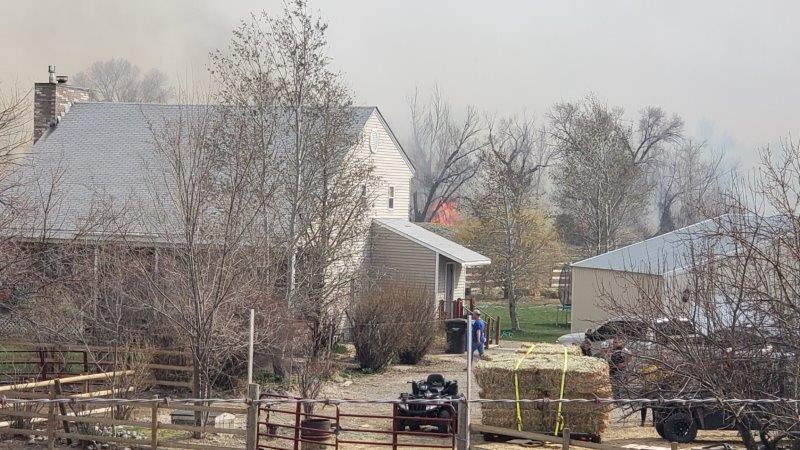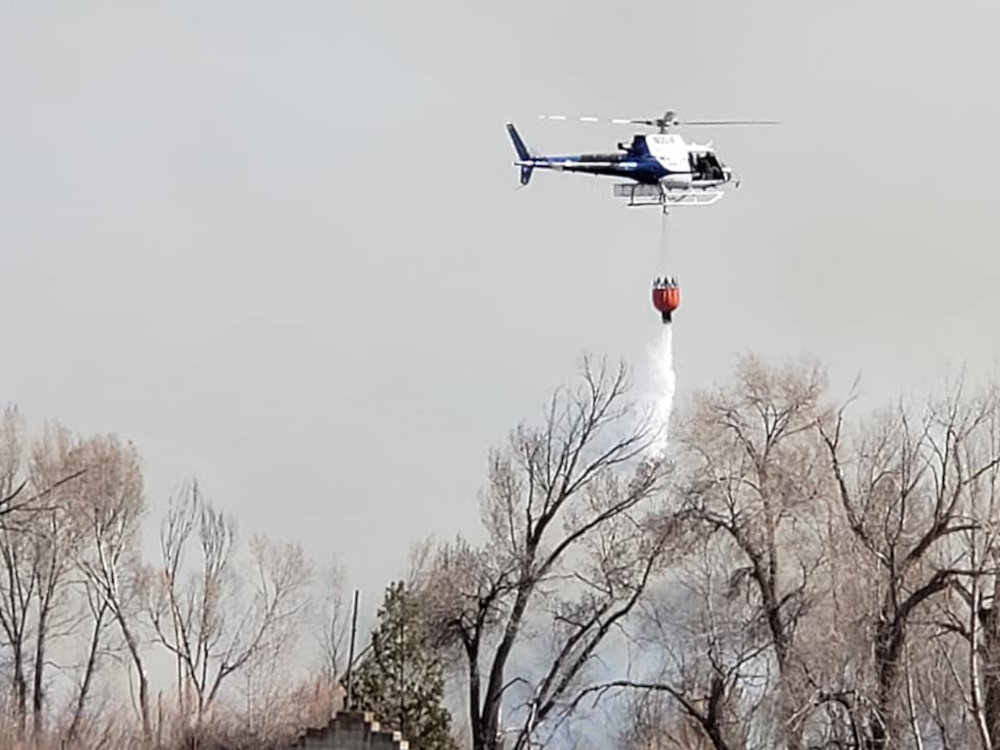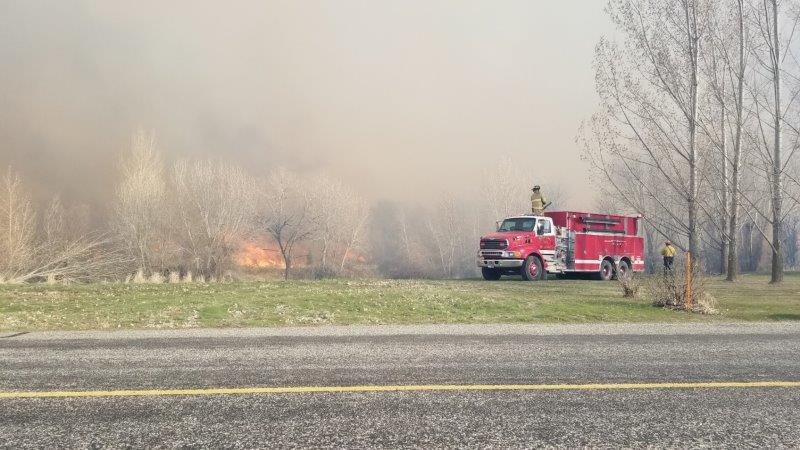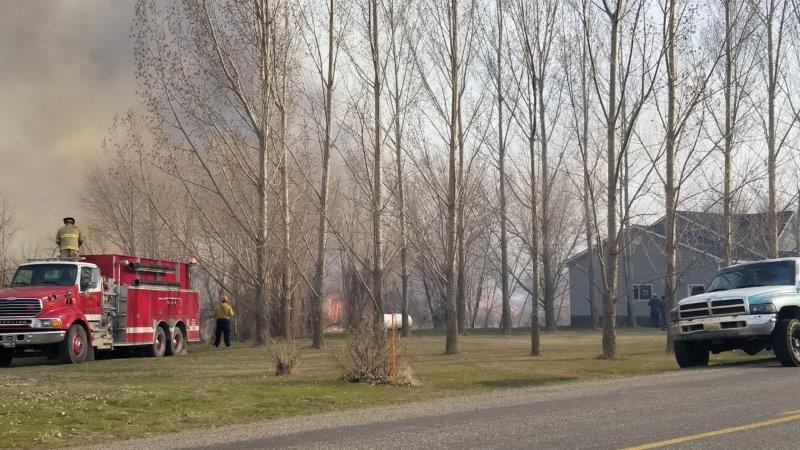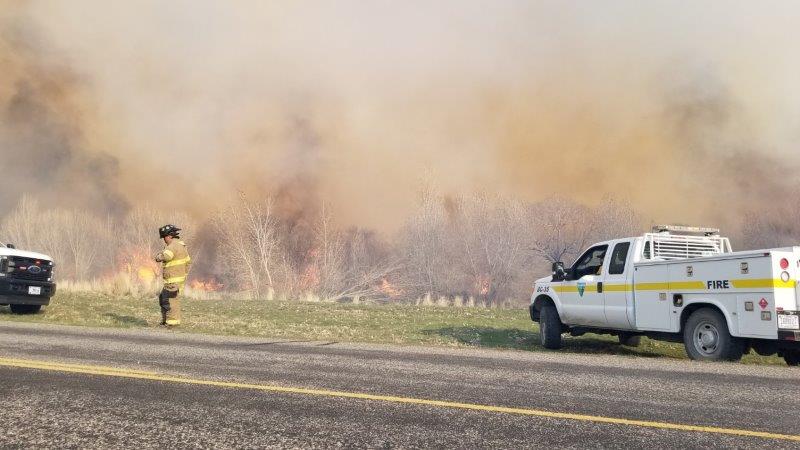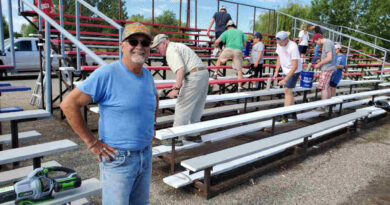Lavaside Fire destroys homes and wildlife habitat
FIRTH – Eastern Idaho’s farming communities rely on canals and ditches for crop irrigation. Naturally, without proper management, those canals and ditches can become overgrown with weeds, which can lead to serious problems. Perhaps the easiest way to prevent this is by periodically burning away the weeds along the banks. It’s a common practice, but when it goes wrong, it can be disastrous.
On Wednesday, April 21, one such controlled burn was taking place along a canal on Lavaside, southwest of Firth in the Rose area. April 21 was a blustery day with winds ranging from 15-22 mph. What started as an ordinary controlled burn, got out of control.
The fire got into the thick underbrush and the juniper trees along the Firth river bottoms. The fire quickly swelled and by the end of the day had burned over 200 acres. Winds died down that evening, but the next day the Lavaside Fire roared back to life.
Thursday, April 22, the blaze doubled back on river bottomland that was largely spared the day before. Before fire officials could adequately respond, the fire burned northeasterly along the river bottoms through thick trees and brush and jumped the main tributary of the Snake River. It then began burning the river bottom area at the end of 700 North; an area improved with acreage homesites and ranchettes.Â
Residents living on 700 N. and West River Dr. were told to evacuate to Firth Elementary School.
“We were asked to evacuate,” local resident Elda Parks said. “But we are also preparing for the fire by using lots of sprinklers and hoses.”
Firth’s high school and middle school are relatively close to where the fire raged. As the fire advanced closer and closer, the schools remained on standby.
“Fire command, they’re monitoring the fire with us. They said right now we are not in any danger, but we’ve get everything prepared to go,†Firth Superintended Basil Morris told Community Pioneer that Thursday.
By that evening, residents on West River Dr. were allowed to return to their homes. The next morning, on Friday, April 23, residents on 700 N were also able to return home. However, what they found when they made it home wasn’t all good.
“The fire destroyed one dwelling, severally damaged another, and destroyed several outbuildings,” Shelley-Firth Rural Fire District Chief Randy Adam said. Â
Fortunately, no one was killed or seriously injured by the monstrous blaze that consumed thick brush, cottonwoods, and juniper trees lying within the river bottom area between Firth and Lavaside.Â
At one point, the fire was actively burning more than a mile of river bottomland and threatening homes and structures on both sides of river.
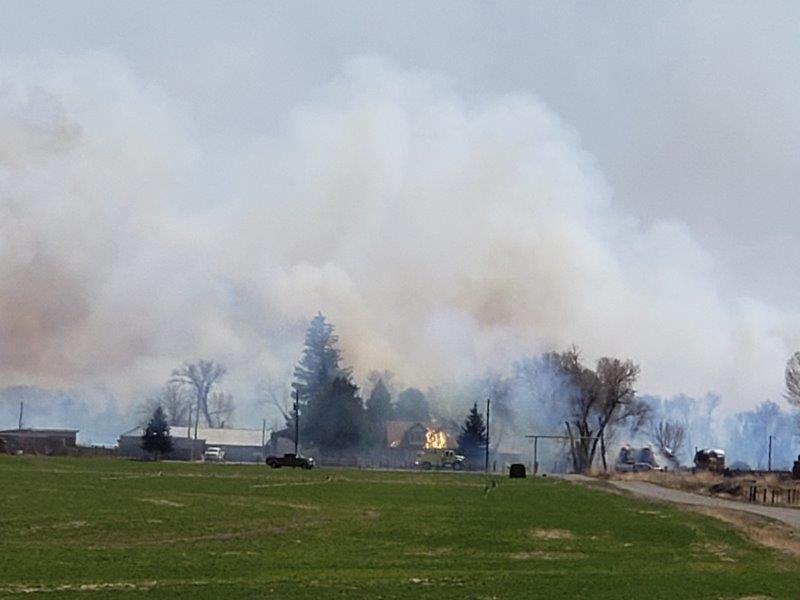
“The fire destroyed one home and severely burned the roof of another as well,” Bingham County Commissioner Mark Bair told Community Pioneer.Â
Bair lives in the area. His home was spared, but he was forced to evacuate. Â
“This was a multi-agency fire with fire departments up and down the valley coming to help,” Adams said.
Chubbuck, Fort Hall, Blackfoot, Shelley – Firth, Idaho falls, the INL, Bonneville County, Central Fire District – Rigby, and Madison Fire Department sent equipment and personnel to the fire.
The BLM, USFS, and BIA were also on hand and were combating the fire.

“The fire has been tough to fight because of its location on various islands along the river bottom and because of the thick growth and brush in this area,” a BLM Fire official told Community Pioneer.Â
The BLM used a scout plane to discover hotspots and provide assessments of the advancing fire. At about 3 p.m., BLM had a helicopter drop water on hotspots around 700 North and along the fire’s western flank as it marched towards homes along East River Road.
When community, family members and church groups learned that people were being evacuated and others’ homes were in danger, they sprang into action. They helped load pickup trucks and trailers with essential items. Many people were on hand, delivering food, water and comfort to the families as the fire bore down on them.
Ruben Estrada, owner of Raised Southern BBQ in Shelley took his food trailer down to the area that Friday afternoon.
“We served over a hundred firefighters, police officers and community members today. A huge thank you to our community for your donations, burger patties from Christensen Family Farms and Elite Western Premium Beef and Sysco foods for cases of water. We love our area and thank you to these volunteer firefighters for protecting our communities,” Estrada said on Raised Southern BBQ’s Facebook page that evening.

Fire personnel and equipment from the various agencies parked their vehicles in the yards of each dwelling to protect it from the approaching fire.
From the back of these homes, flames could be seen 50 to 100 feet in the air as juniper trees, parched by a mild winter and dry spring, burned.
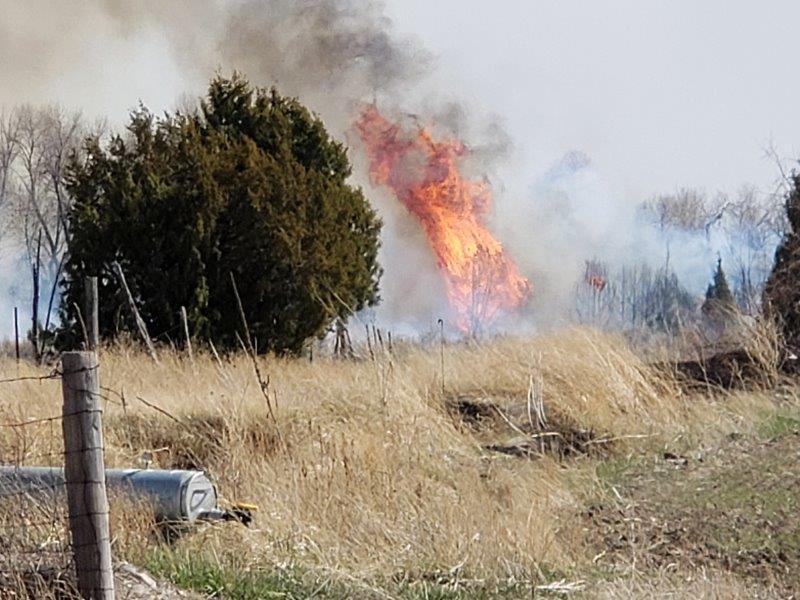
According to the National Weather Service, the wind was blowing approximately 15 to 20 mph with gusts up to 25 mph. However, there were periods when the wind would die down, slowing the fire. As the fire reached the homes on East River Road, the wind changed suddenly from northeast to east, sparing the homes from the fire’s heat and burning embers.
As night fell, firefighters from the BLM cleaned up hot spots and cut down trees to contain the fire as it burned its way into the main tributary of the Snake River.
By Saturday, April 24, the Lavaside Fire had stopped growing, and mostly continued to burn in one area.
Finally, on Sunday, April 25, the BLM announced that the Lavaside Fire was completely contained. While some suffered substantial loss from the fire, the community rallied together offering so many donations that the Sheriff’s office sent out a message on Facebook saying that they had received more donations than they could possibly use.
After the countless man hours and the devastating destruction caused by the Lavaside Fire, BLM had this to say:
“Once again, please use extreme caution when doing spring burning. Even with the recent precipitation across the region, the grass and brush will dry out quickly once warmer temperatures and wind return.”
